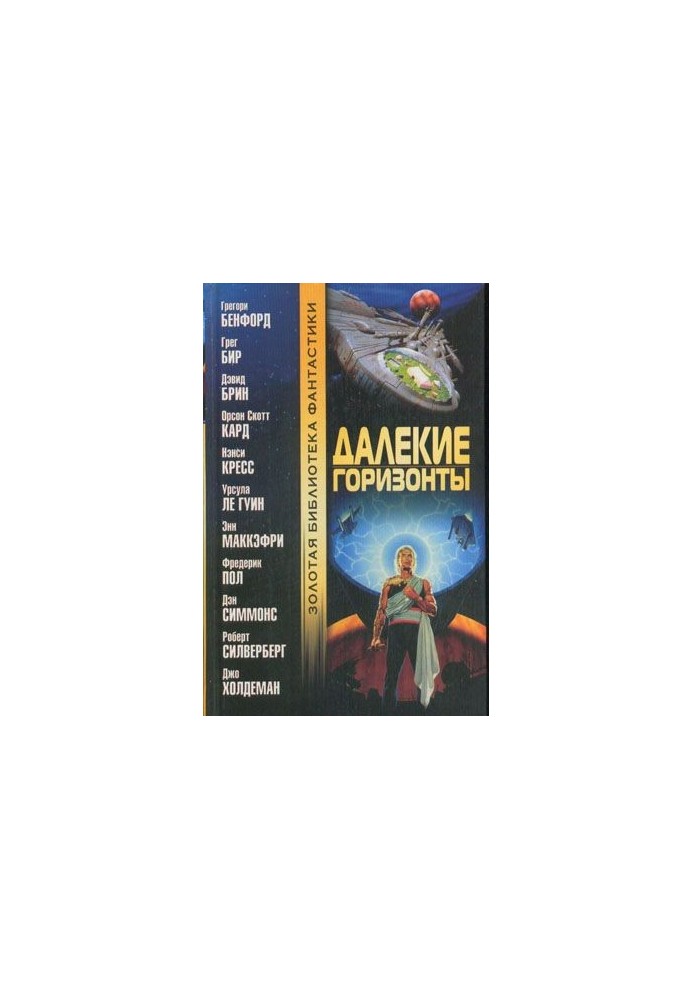Getting to know the dragon
 Instant download
Instant download
after payment (24/7)
 Wide range of formats
Wide range of formats
(for all gadgets)
 Full book
Full book
(including for Apple and Android)
Eternal Rome: The Promised Land (1989) The Tales of the Vienna Forest (1989) The Empire's Outpost (1991) Dear Rome (1994) The Waiting for the End (1998), Works from the series "Eternal Rome" are based on the principle of alternative history The author proposes a scenario according to which the ancient Jews remained in Egypt, and did not leave it under the leadership of Moses, as described in the Book of Exodus. Since it follows that the Jews failed to settle in Palestine, Jesus of Nazareth was never born, Christianity did not arise, and Rome remained pagan. The history of Rome in this alternative version, at least in the period from the foundation of the city to the fourth century, is basically identical to the history of our Rome. Empire arises at Augustus, expands at Trajan, Hadrian, and Marcus Aurelius. Further deterioration of the situation of the state in the third century during the military dictatorship, and under Constantine the Great, the Empire disintegrates into the western and eastern parts. After Constantine, who in our universe made Christianity the official religion of the Empire, history goes the other way. The Empire , instead of weakening as a result of the strife between the heirs of Constantine , This is what happened in our history ,. and political squabbles, Changes in the scale of moral values , Introduction of Christianity , On the contrary, develops and grows territorially during the fifth century and is finally strengthened in the period, which we call the Dark Ages ,. repels the aggression of the barbarians and becomes a world empire extending from Britain to the borders of India and China. The Empire has no serious rivals, although at times tensions arise between its western and eastern halves. The Aztec and Inca empires in the New World remain independent and powerful, despite Rome's failed attempt to conquer them and establish a New Rome on the other side of the Atlantic Ocean. The time described in the stories of “Eternal Rome” begins from 753 BC. e. (the traditional date of the founding of Rome), and therefore our 1999 corresponds to the year 2752 by alternative chronology. Of the already written works in the series, the earliest in chronology is “Waiting for the End”, the action of which refers to 1951 alternative history, or to 1198 AD. n. e. It tells the story of the western half of the Empire during the decade when its territory is invaded and defeated by the troops of the Greek-speaking eastern half. The imperial years from 2250 to 2550, corresponding to our XVI, XVII and XVIII centuries, are characterized by the Renaissance, which receives the first impetus under the great Emperor Trajan VII, when the period of great geographical discoveries began and trade relations with Asian countries developed rapidly. The growth of the economy caused by the emergence of new trade routes inevitably leads to the industrial revolution and the disintegration of the imperial center into regions whose population speaks dialects already close to the real languages (Galician, Spanish, British, "Roman" - Italian and others). Hence the gradual weakening of the central power, characteristic of the stage of the "prosperous decadence" .. An attempt to reunite the almost independent European provinces was made in 2563 by an alternate history (1810 AD). n. e. The Man of the Napoleonic Warehouse by Count Valerian Apollinaire . It proved successful, and for a time the Empire, led by the "shadow" figure of Apollinaire, seems to have come to life. The murder of Apollinaire means the death of the imperial system. After eighteen centuries of Caesarian rule, a broad social movement is emerging to end the lazy and luxurious aristocracy and return to the ancient republican traditions of rule destroyed by Augustus. The next of the already written things - "Dear Rome" - tells about the overthrow of the last Emperor in 2603 (1850 n. e. ), the murder of most members of the imperial family and the establishment of the Second Republic under the aegis of the authoritarian and conservative Kai Juni Scevola, who assumes the title of First Life Consul. Next story “Tales of the Vienna forest” refers to the time fifty years after the fall of Caesars It features the last surviving member of the imperial family - an old man living in a quiet forest shelter near the city, which we call Vienna. Then our narrative is moved to 2723 (1970 г. n. e. ) in the story "The Promised Land" . Here, the charismatic Egyptian Jew Moshe tries to build a spaceship to take his people to another world. The attempt to launch the ship ends in disaster. Moshe is killed, but the story ends with us witnessing the emergence of a new messianic religion. His hero is Moshe, who is revered as the Son of God. The story offered to readers dates back to the year 2503 (1750 g. n. e. ). He fills the gap in the series by describing the Empire in the final years of the Second Decade, when Emperor Demetrius II is about to take the throne, and a historian recalls the Renaissance period that began under Trajan VII a quarter of a millennium ago as the Golden Age.
LF/948749832/R
Data sheet
- Name of the Author
- Роберт Силверберг
- Language
- Russian
- ISBN
- 9785170064663
- Release date
- 2001







